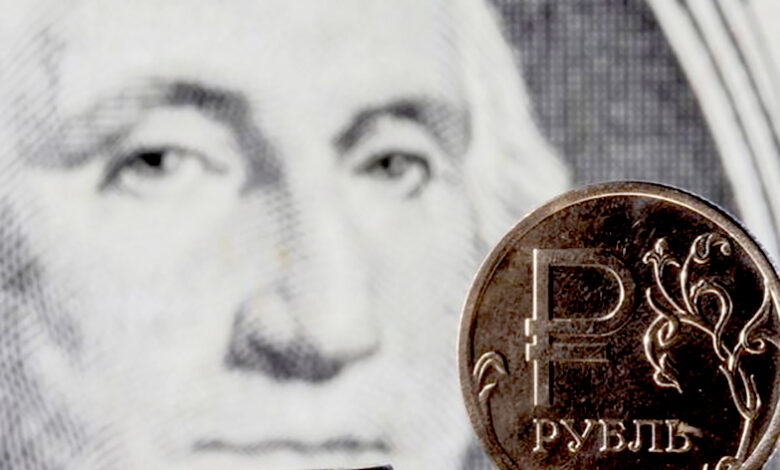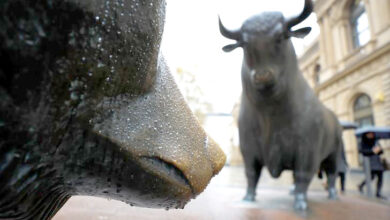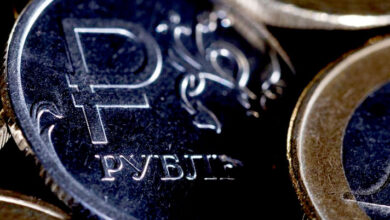Russia makes a U-turn to avoid default: What happens next?

(Reuters) – NEW YORK (Reuters) – Russia may have dodged disaster when it declared that it had made several past-due dollar payments on its foreign debt, refocusing the market’s attention on impending installments and whether it would avoid a historic default.
Following Russia’s invasion of Ukraine in late February, global financial markets have been worried about Russia’s $40 billion in debt to other countries and the risk of a debt default.
Russia’s invasion, dubbed a “special military operation,” has turned the country into a pariah state, particularly in financial markets, and has jeopardised the country’s ability to repay its debts.
In early April, the US blocked the Russian government from getting access to frozen funds so it couldn’t pay bondholders $650 million.
On Friday, Russia’s finance ministry said that it had paid $564.8 million in coupon and redemption obligations on a bond that was due in 2022, as well as an $84.4 million coupon payment on another that was due in 2042. an
A default was expected to happen on Wednesday, which would have made it Russia’s biggest foreign debt default in almost a century. Markets were preparing for that.
What Happened on the 29th of April?
The Russian finance ministry said that it has settled a roughly $650 million debt with the holders of two of its dollar-denominated bonds. Two creditors told Reuters that they had not yet received payment, but a senior US government official verified that payments had been made and that the source looked to be beyond the scope of the present sanctions.
The Credit Derivatives Determinations Committee, which represents the world’s largest banks and asset managers, met on Friday and acknowledged reports of Russia’s payments, but decided to hold a credit default swap auction next week “solely to prepare for the possibility of a failure to pay credit event.”
How did the market react?
According to dealers, Russian bond prices increased by as much as 15 cents, virtually tripling in price. Bonds of key businesses that remain sanctioned, including Gazprom (MCX:GAZP), Lukoil, and telecommunications giant VimpelCom (NASDAQ:VEON), were also quoted higher by 2–5 cents.
Insurance against Russia’s default has become more affordable, with five-year credit default swaps (CDS) linked to the country’s sovereign debt falling to 64.333 percent upfront from 76.4 percent on Thursday, according to S&P Global (NYSE:SPGI) Market Intelligence.
What comes next?
If Friday’s payments are confirmed, the focus will move to two events scheduled for the end of May:
If you’re a US citizen and want to do business with Russia’s finance ministry, central bank, or national wealth fund, you need a temporary licence from the US Office of Foreign Assets Control (OFAC). This licence is set to expire on May 25.The US Treasury has made no statement about the possibility of an extension of that deadline.
2) On May 27, Russia is expected to make coupon payments on a 2016 dollar bond and a 2021 euro bond.
Payments on the euro bond may be made in roubles as a last option, but not on the dollar bond.
The bonds underlying the April 4 payment did not contain a provision for rouble payments, which was critical in establishing that a “possible failure to pay” occurred when Russia attempted to pay in roubles.
How much does Russia owe, and is Moscow capable of paying it?
If last week’s payments were received in full, Russia’s foreign bond payment commitments until the end of the year would total around $2 billion.
Prior to the Ukraine crisis, investment funds and money managers outside Russia had around $20 billion, or half of the outstanding foreign currency issues.
A Russian default is unusual in that Moscow is believed to have the money necessary to meet its commitments. The fact that some of its sources are blocked or sanctioned reduces the issue to Moscow’s desire, rather than its capacity, to pay through other funding sources.
As a consequence of the sanctions, half of Russia’s roughly $600 billion in foreign reserves were frozen as a consequence.
While Europe has committed to diversifying its energy imports, Russia has earned an average of about $1 billion per day this year from oil, coal, and gas sales.





